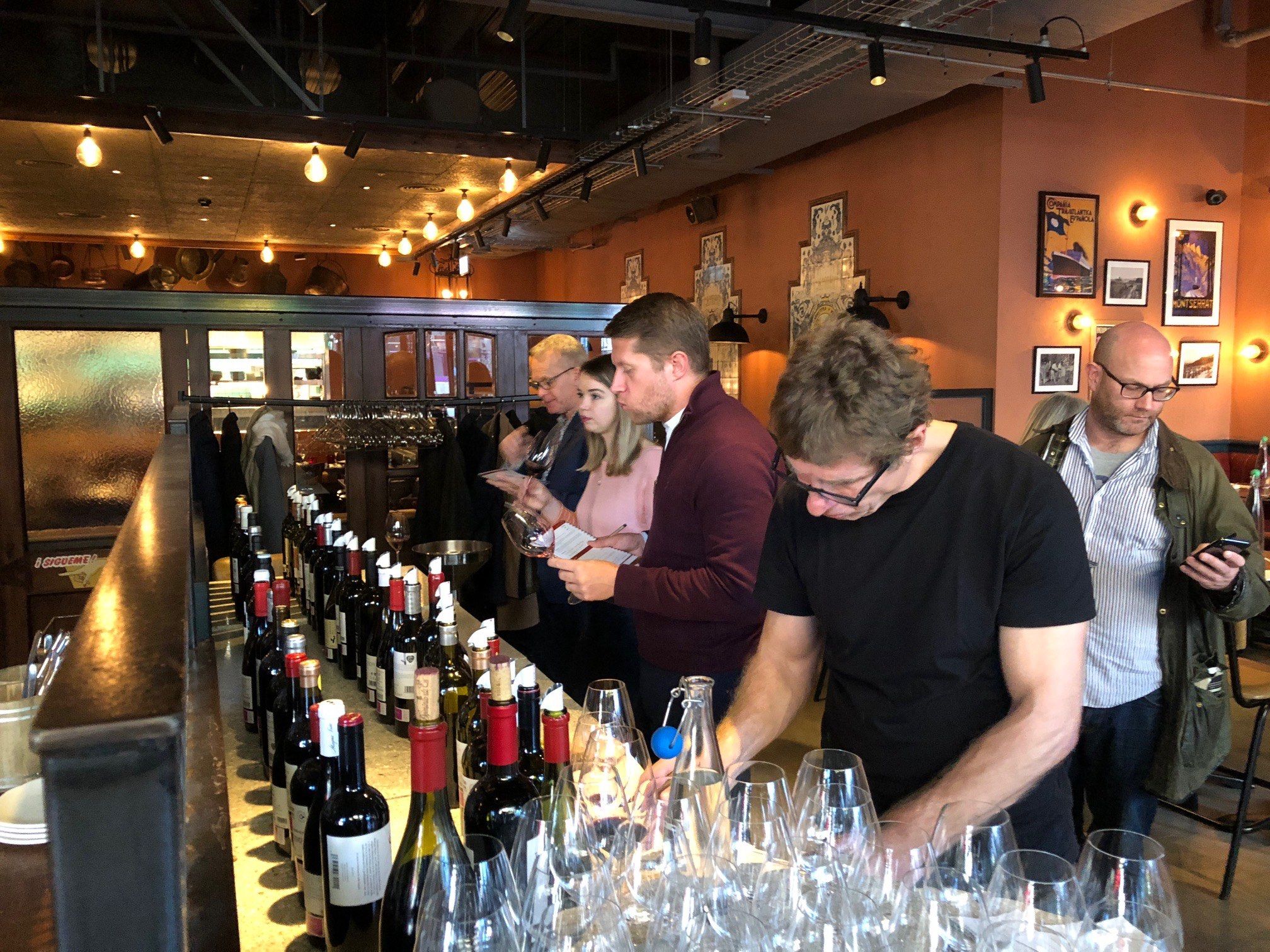For many independent wine merchants Ribera del Duero can do no wrong and is increasingly becoming their go to alternative region for customers that can’t afford other more expensive, premium regions around the world.
Overview
Ribera del Duero, situated around 120km north of Madrid, is one of Spain’s top wine producing regions, although it was not actually awarded DO status until 1982. Best known for its robust red wines made with the Tempranillo grape, Ribera is an inland region, with mountains protecting its valley floor, of extreme climatic conditions. Here temperatures can soar to near 40 degrees celsius in the summer and plummet to well below freezing over the winter months. Such diurnal temperatures, the vineyards’ high elevation, with vines grown up to 900m high, help to produce the high quality fruit for which the region is known.
To help assess where Ribera del Duero currently sits amongst leading UK wine buyers and independent wine merchants, The Buyer, in association with the Consejo Regulador de la Denominación de Origen Ribera del Duero, the region’s generic body, held a combined panel debate and tasting. It was also an opportunity to taste some of the best wines from the region personally selected as part of Tim Atkin MW Ribera del Duero Top 100 from the area.
Joining us for the event were:
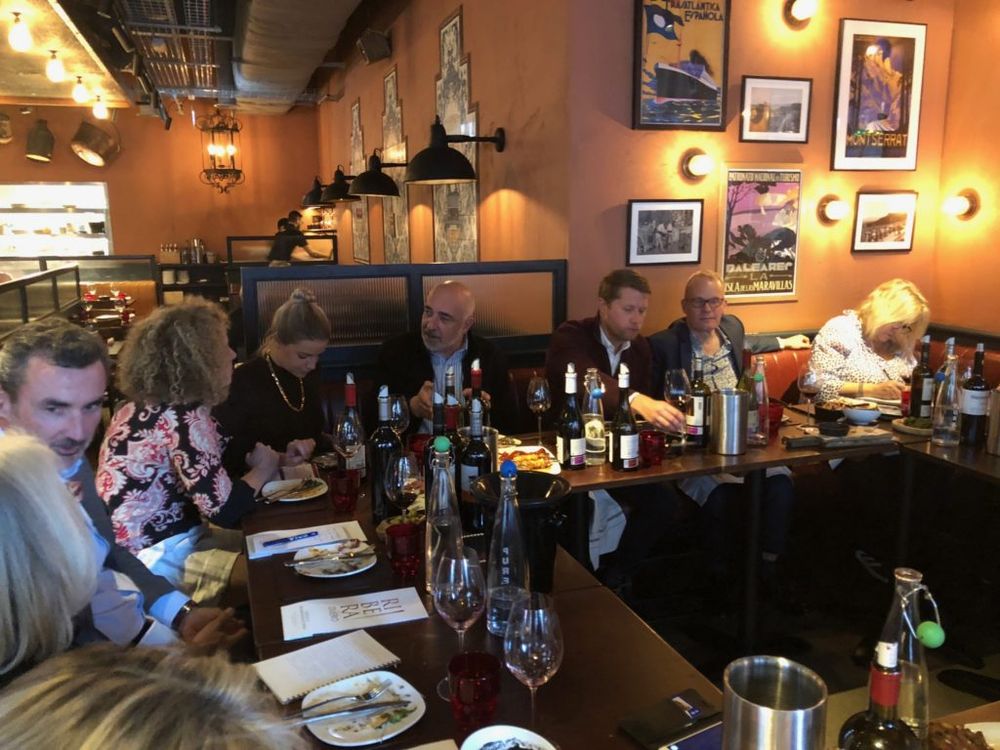
Leading independent merchants came together for the debate at Camino in Shoreditch
- Tim Atkin MW, timatkin.co.uk
- Paola Tich, founder, Park + Bridge
- Jason Millar, Theatre of Wine
- Susan McCraith MW, David Bell McCraith
- Zoran Ristanovic, The City Wine Collection
- Richard Bray, Hedonism Wines
- Andrea Viera, Last Drop Wines
- Nick Beck, Borough Wines
- Richard Bigg, Camino
- Hal Wilson, Cambridge Wine Merchants
- Agustin Alonso, technical director, Consejo Regulador de la Denominación de Origen Ribera del Duero
- Pablo Baquera Peironcely, marketing director, Consejo Regulador de la Denominación de Origen Ribera del Duero
Ribera del Duero – what makes it special?
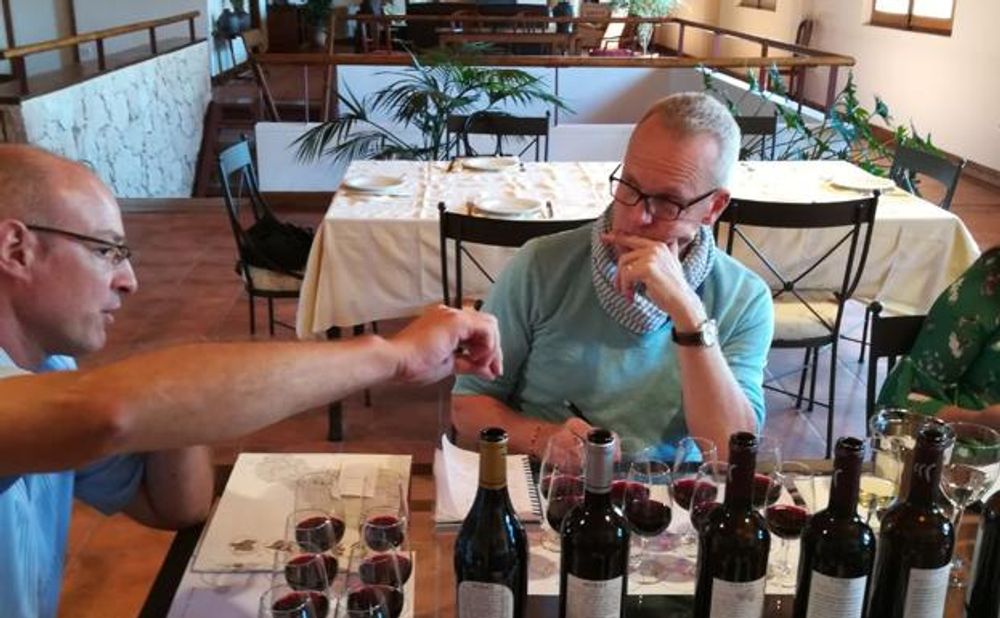
Tim Atkin MW during one of many tastings in the Ribera del Duero
To help set the scene Tim Atkin MW kicked off proceedings by explaining what makes the wines from Ribera stand out for him: “This selection of wines highlights the diversity of the region, which is comparatively small, but very diverse, dependent on a number of factors including the soil type, the altitude and whether the vineyard is situated to the east or the west.”
As a result it was importantto “taste as many wines as possible” so that he can best demonstrate the enormous scope of wines being made across the region’s six main zones. “Each zone is so distinctive,” he added.
“We have to take in stylistic considerations too, such as when the grapes are picked, whether they are oaked, the age of the vines, all of these parameters contribute to the diversity. The enormous diurnal variation also helps give the wines from the region their identity. They are rich, powerful and made to age, though I deliberately chose wines that show well young, and age well too.”
Agustin Alonso, technical director of the Consejo Regulador de la Denominación de Origen Ribera del Duero said he was pleased Atkin’s Top 100 selection demonstrates the variety and depth of wines now being made in the region. But with 32 different soil types in such a relatively small area, all influenced by the river the stretches from east to west, and a variety of north and south facing vines, it is not surprising the wines should show such diversity, he stressed.
While Tempranillo, or Tinto Fino as it is known locally, is undoubtedly the region’s star grape, and by far the most widely planted, accounting for over 95% of Ribera’s total production, Atkin pointed out that other varieties are also doing well in the region. These include Cabernet Sauvignon, Merlot, Malbec, Garnacha and the white grape Albillo, also known locally as Pardina.
Albillo, which Atkin described as “potentially one of the great white grapes of Spain”, is a lesser known variety that has made its home in Ribera. Producers are currently allowed to make rosé from Albillo, and it is also used to blend in small quantities with red. The grape is not yet used to make whites, “though that may change in the not too distant future,” added Atkin. “It offers a good combination of acidity and texture and adds freshness. It potentially adds a really exciting dimension to wines from the region. Planted along with other varieties such as Garnacha Blanca, you can make some really interesting blends. The Albillo adds a nice freshness and acidity to the wine,” added Alonso.
Richard Biggs, owner of Camino restaurant who was helping to host the event at its Shoreditch restaurant, is also a fan of Albillo. “I’ve tried a couple of the wines, and they are terrific, helping to open up the appeal of the Ribera region. I love the grape.”
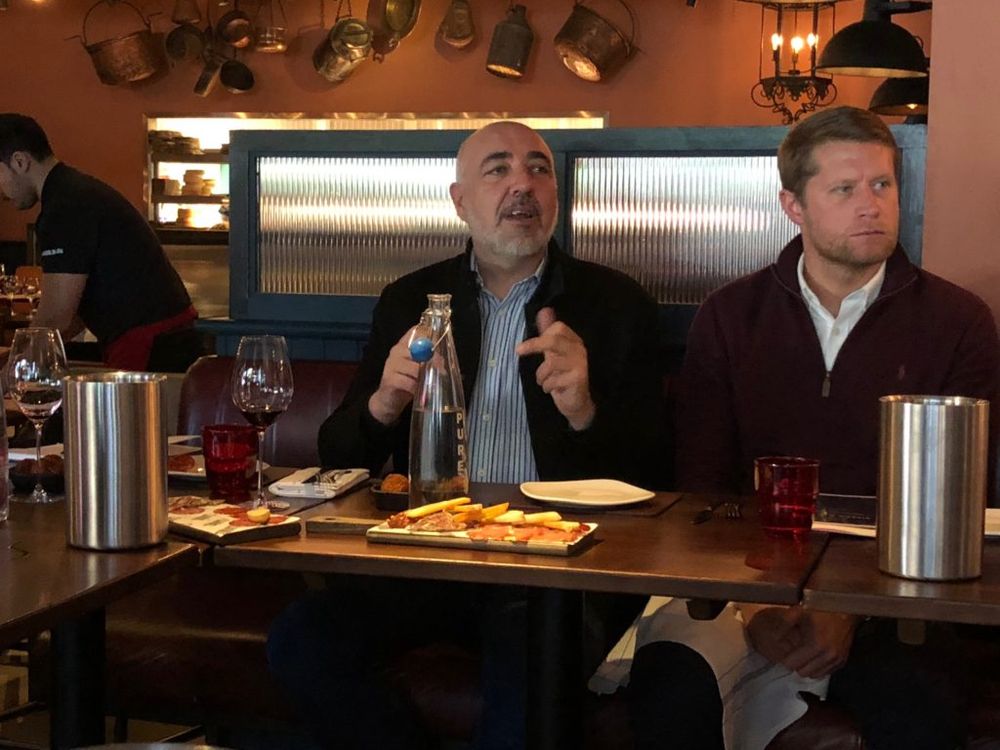
Agustín Alonso, technical director of Consejo Regulador de la Do Ribera del Duero, says part of the success of the region is the fact producers are willing to work together
Evolving region
Because Ribera is a relatively young wine growing region, it is still evolving, said Atkin, in terms of “which are the best villages, and which styles work best”. “Some producers have gone for bigger bolder styles, others pick early and have gone for fresher brighter wines. I think that’s a good thing, you don’t want a monochromatic wine region where everyone makes the same style of wine.”
Alonso agreed. “The wines from the same region can differ from year to year,” he said. “It’s an extreme place. In a warm year you might pick the grapes from a north facing slope, or in a colder year from a south facing slope so the grapes are very different.”
He pointed out that back in the 1980s the wines were relatively fresh and light, and then there was a move towards a riper style with a more heavy handed approach to oak. Now there has been a bit of a U-turn, with many winemakers embracing a more elegant and fresher styles of wine.
That willingness to listen and change their styles of wine individually and as a collective is no surprise to Zoran Ristanovic of The City Wine Collection, who visits the area regularly. “There is such a big community spirit in Ribera,” he said. “People will recommend each others’ wines all the time. They are keen to show what their friends are doing as well as show you their own wines.”
“We like to help each other out,” agreed Alonso.
Atkin said he was pleased to see how the wines are being toned down as that certainly chimes with the growing trend amongst British wine drinkers who are increasingly hankering after wines that are fresh and not quite as powerful as the wines they were drinking 10 and certainly 20 years ago.
Opportunities with UK merchants
So what is the perception of Ribera del Duero amongst the UK trade and consumers? “I love the fresher style, though the wines are still quite big and luxurious,” said Paola Tich at Park + Bridge.
“It’s still a fairly nascent area, so there is an opportunity there to introduce a lot of different styles – let’s face it Rioja has a lot of different styles. So Ribera has a great opportunity to put a stamp on it,” added Nick Beck of Borough Wines.
Richard Biggs said his Camino group of Spanish restaurants was doing particularly well with Ribera del Duero wines and was keen to look at new wines so that he could sell more. “Public perception may change more slowly, but my perception has even changed today tasting all of these wines. The freshness! You would have no idea they had such high alcohol content, they are so well balanced.”

Camino’s Richard Bigg, right, in deep discussion with Hal Wilson, Cambridge Wine Merchants centre and Zoran Ristanovic, The City Wine Collection left
Andrea Viera of Last Drop Wines, who currently stocks four wines from the region in her King’s Road shop in London, said most of her customers had no preconceptions whatsoever as Ribera was still a relatively new region to them. “The first sell is the hardest, as there is very little understanding of the region, but after that I can sit back. The quality simply shines through.”
She said the fact there is such a “huge diversity” of wines from the area was a real bonus, but was uncertain how many would be in the price range she is looking for.
Pay a premium
It’s the fact that Ribera del Duero wines can “demand a certain price point” that makes them such a must have part of your range, said Tich. She admitted she did not get that many people coming in asking for Ribera, but if people like New World Wines then it is a great opportunity to introduce them to a premium alternative from Spain which is normally quite easy to do.“People are prepared to pay for Ribera wines,” she added.
Jason Millar at Theatre of Wine agreed and said he found the region was picking up interest from his more New World wine drinkers familiar with Malbec and Shiraz, who are looking for more fresher, lighter oak styles. “People are less interested in that heavy oaked style,” he confirmed. Millar said there was clearly now so many “interesting” wines from the region to explore and show different aspects to his customers.
Hal Wilson of Cambridge Wine Merchants found that selling Ribera wines priced “in the teens” was fairly easy, though “more of a challenge at the £30 to £50 mark”. “It’s easier to sell than against benchmark Bordeaux. I will be looking to try and sell more premium Riberas. There are clearly so many more wines to discover.”
Millar agreed that it was the £30 plus wines “that were harder to sell” other than icon Ribera wines.
Richard Bray at Hedonism also said many of his customers who were former fans of Australia and Bordeaux were switching to Ribera. “Ribera is increasingly taking customers away from Australia and Bordeaux as they can’t find the wines they want from there. Ribera, by comparison, never disappoints,” he said. “There is always great structure with Ribera wines. All the parts in the right place when you taste them.”
“We are seeing the same trend with California,” added Susan McCraith MW of David Bell McCraith, who said she was pleasantly surprised by the Ribera wines. “I expected over oaked wines, but there is a definite move towards freshness and elegance. Despite the high alcohol content, typically around 14%, the wines felt well balanced, and higher in acidity. The point isn’t the alcohol, but the balance. There has been a definite shift in style.”
Ristanovic said Ribera also offered great value for money at lower price points too. “There are plenty of sub £10 Crianzas in Ribera that are very good,” he stressed.
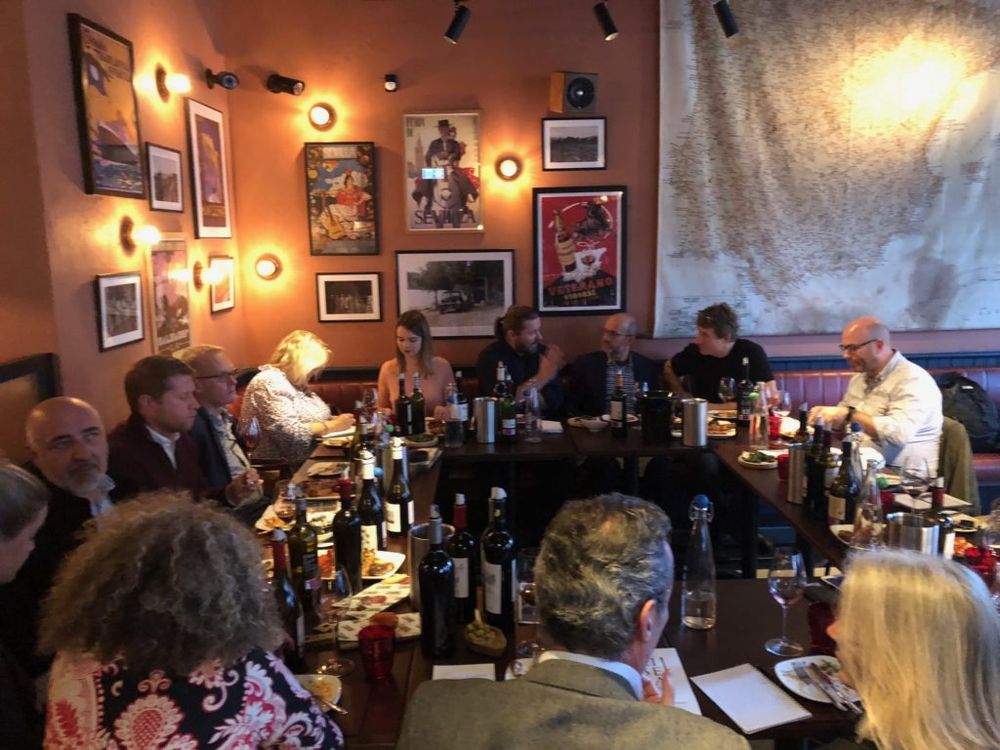
The independents were agreed that Ribera del Duero offers great value for money for the quality of the wine
The right serve
Given the potentially high alcohol content it was important, stressed Bigg, to serve the wine at the right temperature. It is something they take great attention to at Camino and will look to pour Ribera wines at 17 to 18 degrees. “The wines need to be served at cellar temperature not room temperature. It’s perfectly normal in the summer in Ribera to put the wine in an ice bucket. You wouldn’t serve a cup of tea lukewarm, you have to serve different drinks at the right temperatures. If you get the wine to show itself at 15 to 18 degrees it’s extraordinary.”
Despite the shift towards a more elegant and lighter style of wine, it can take time to filter the message down to consumers, so are most customers still expecting big bold wines from Ribera?
“I think you can do concentrated, intense wines, but they don’t have to be heavy, over ripe or jammy,” said Miller. “They don’t have to be heavily oaked, though you don’t want to go too far in the other direction and become very high acid and lean and anorexic.”
Consistency is key
Nick Beck at Borough Wines, certainly believes Ribera wines are becoming more accessible. “I’ve noticed customers looking for these styles,” he said. “I get a lot of repeat business from Ribera. There is a consistency there, which the wines produce vintage after vintage.” However, he said the wines were “definitely” a hand sell product, given the general lack of knowledge amongst customers regarding the region. “The target customer for Ribera wines might be someone who is looking for a wine with a richer feel, something they can enjoy during the week with their dinner and priced between £12 and £20.”
Bray at Hedonism said if he was putting together a mixed case of wine for a customer he would always look to include a Ribera wine “as you know they won’t be disappointed”. “They are just so solid and reliable.”
The challenge he has at Hedonism is to get people to move away from just the big names and discover other wines from the region. “Ribera can help do that,” he claimed.
Alonso hoped it was the region’s reliability that will also become one of its key calling cards. “When you find a place you like, not all of the wines are necessarily going to be your cup of tea, but you can trust them and you will find them reliable,” he said. “If you look at a map of Spain you can see the region is protected by the mountains on all sides. Consistency and quality are quite high, and it’s rare to get a bad vintage from Ribera.”

Susan McCraith MW chats to the Consejo’s marketing director, Pablo Baquera Peironcely
The fact that producers also look to make a large number of blends means wines can keep their level of quality from one year to the next, added Alonso. “Blends are really important for that,” he said. “Every year the assortment of grapes might change but you get that consistency.”
Ristanovic said that was largely down to the fact so many of the wines come from vines that are at least 40 to 60 years old, or more. “In fact, a wine made from less than 40-year-old vines would not be considered a serious wine,” he explained. “You certainly don’t get the problem of a bad vintage in Ribera as you do in Bordeaux,” added Ristanovic.
Don’t go too far…
While the merchants mostly agreed it was a good thing the overall style of wines from Ribera are shifting, particularly in terms of oak and extraction, Hal Wilson of Cambridge Wines added a note of caution. “They don’t want to change too rapidly from a much liked and understood benchmark,” he said. “I think they are gradually evolving and moving away from the more obvious oaked styles. I think that those customers who like Ribera and enjoyed it for one thing are also evolving and their tastes are also shifting away from the obvious use of oak. We can take our customers with us without giving them a very different type of wine.”
Paola Tich agreed that it was important for merchants to be aware of what their customers are looking for and to guide them towards the newer styles. “When people come into the store and ask for Ribera they are looking for something big and luxurious. In my head when I think of Ribera I think of a big, plush wine.”
Atkin said you have to remember that in winemaking terms, Ribera is still a young “evolving” wine region, and that it will be some time yet before we know which are the best styles from different villages and zones. Which again makes it such an exciting and dynamic region to discover, explore and visit.
Alonso said he was pleased to hear there is so much potential for Ribera in the UK,for there are certainly enough wines in the area to satisfy that demand. In fact, he likened Ribera and Rioja in Spain as being as big and important to the country as Real Madrid and Barcelona.
Pushing Ribera’s zones
Atkin says looking at Ribera as six different sub zones is far more effective and relevant to understanding what the region can do and how each zone differs from each other. For example, the so-called golden mile in the western part of the region is where many of the better-known wineries are based, though not necessarily where all the fruit is sourced. “A lot of the best vineyards in the area face north, on the other side of the river,” said Atkin.
They are low altitude but north facing. Then there are high altitude areas, up to almost 900m, in another zone. “I think sub zones make a lot of sense,” he stressed.
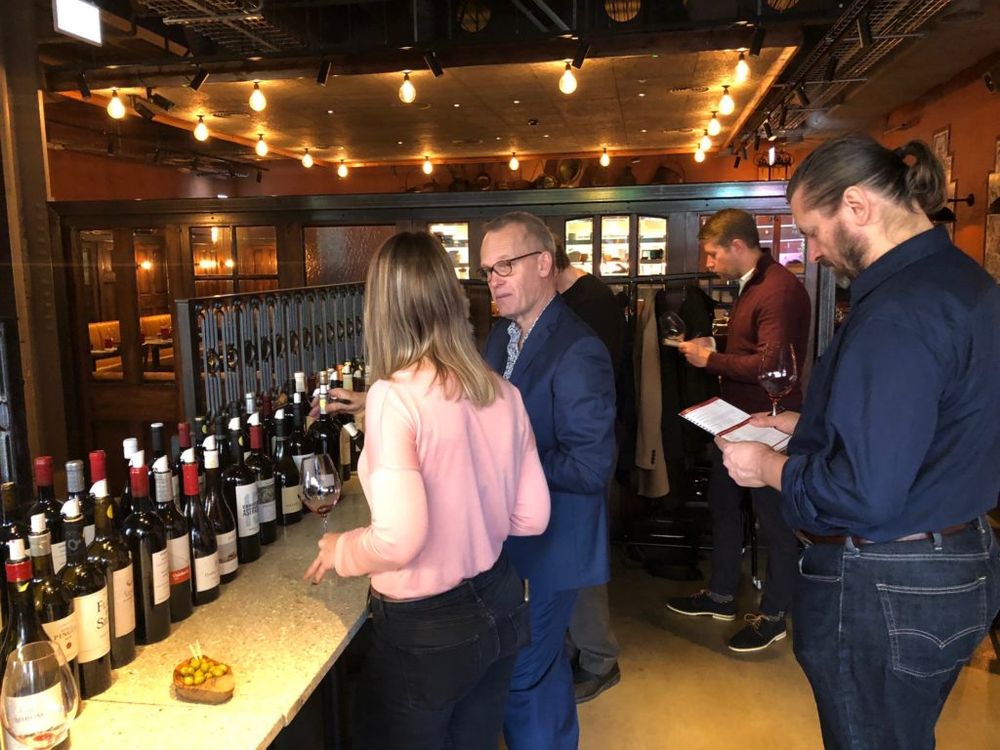
Tim Atkin MW shows some of the wines from his Top 100 Ribera del Duero report at the debate and tasting
Looking to the future
The panel was united in agreeing the future forRibera del Duero in the UK is particularly strong. Millar said he believed the region was “already in a very good position: “It’s all about keeping up that level of experimentation and diversity.You can see people pushing the boundaries, with lots of ripeness and oak and opulent styles of wine. I would like to see a willingness to experiment further.”
Bigg agreed: “Today has really opened my eyes to what is happening in Ribera. Also nobody is being restrained about what Ribera should be about. There is lots of innovation here but producers are still staying true to what nature gives them. These are honest wines.”
Tich said Ribera has all the appeal that Italy and Rioja can offer her customers. “These are the kinds of wines my customers are looking for.”
“It’s a case of getting a glass of these wines in my customers hands,” said Viera at Last Drop Wines. “If you can sell them by hand first then build on that.”
It was fitting that Atkin should close the debate by summarising where he sees the potential for Ribera. “I think the future is very exciting. Ribera is increasingly becoming more about a sense of place, or places, in that people blend across the region. I think more elegance, less obvious oak and maybe picking earlier will all come to the fore. There are all a lot of positive things, and there are many smaller younger producers doing exciting things with smaller plots, there is a lot of energy about the place.”
Wines that will no doubt, in time, find their way not only into Atkin’s Top 100 Ribera del Duero wines, but onto the shelves and lists of leading restaurants and wine merchants across the UK.
- Thanks to Richard Bigg and the team at Camino Shoreditch for hosting the event and pairing the wines to a range of tapas.
- Thanks also to the Consejo Regulador de la Denominación de Origen Ribera del Duero and Westbury Communications for helping to organise the event. You can find out more about the Consejo at its website here.
- You can find out more about Tim Atkin’s Ribera del Duero Top 100 here.
